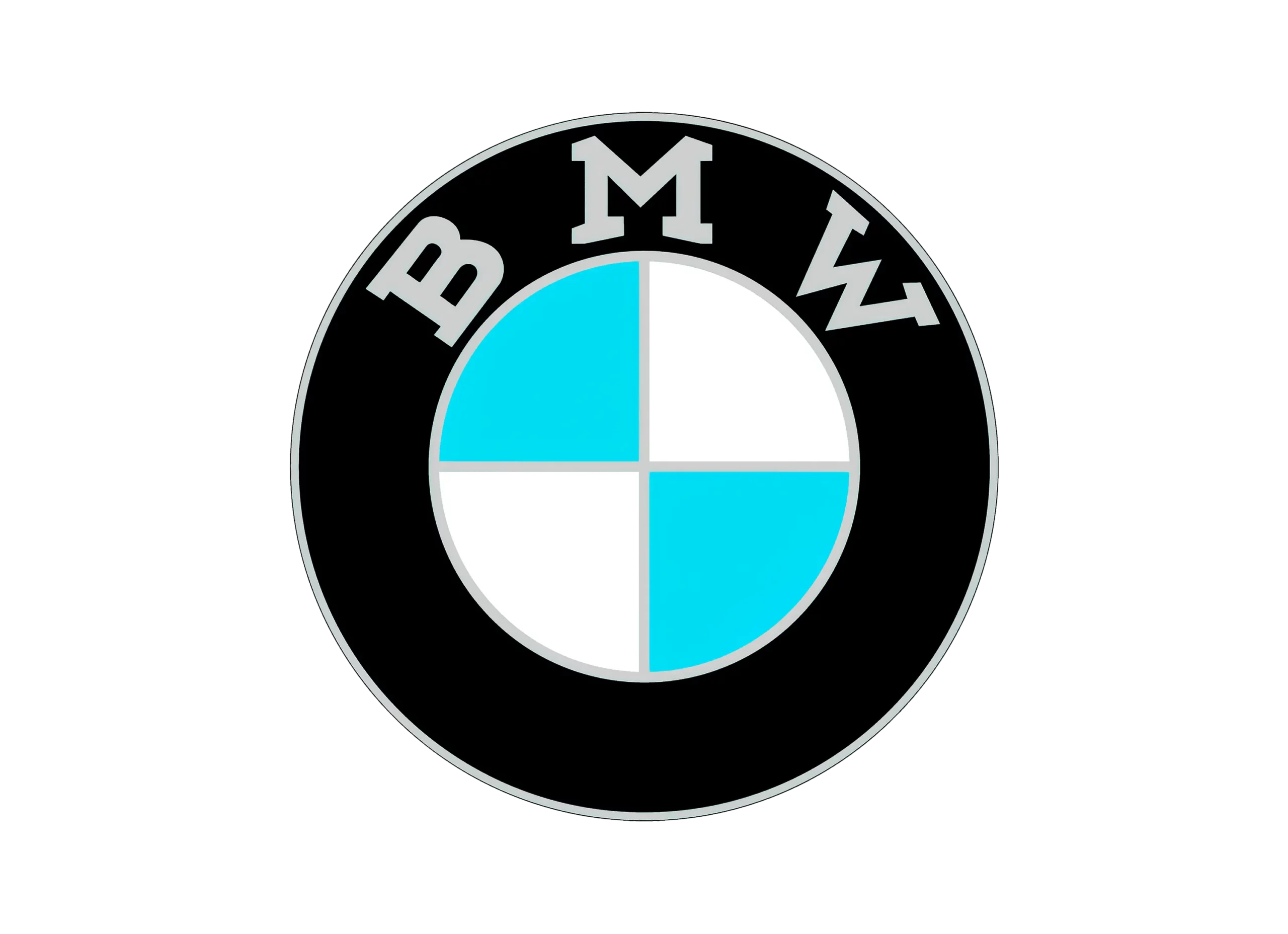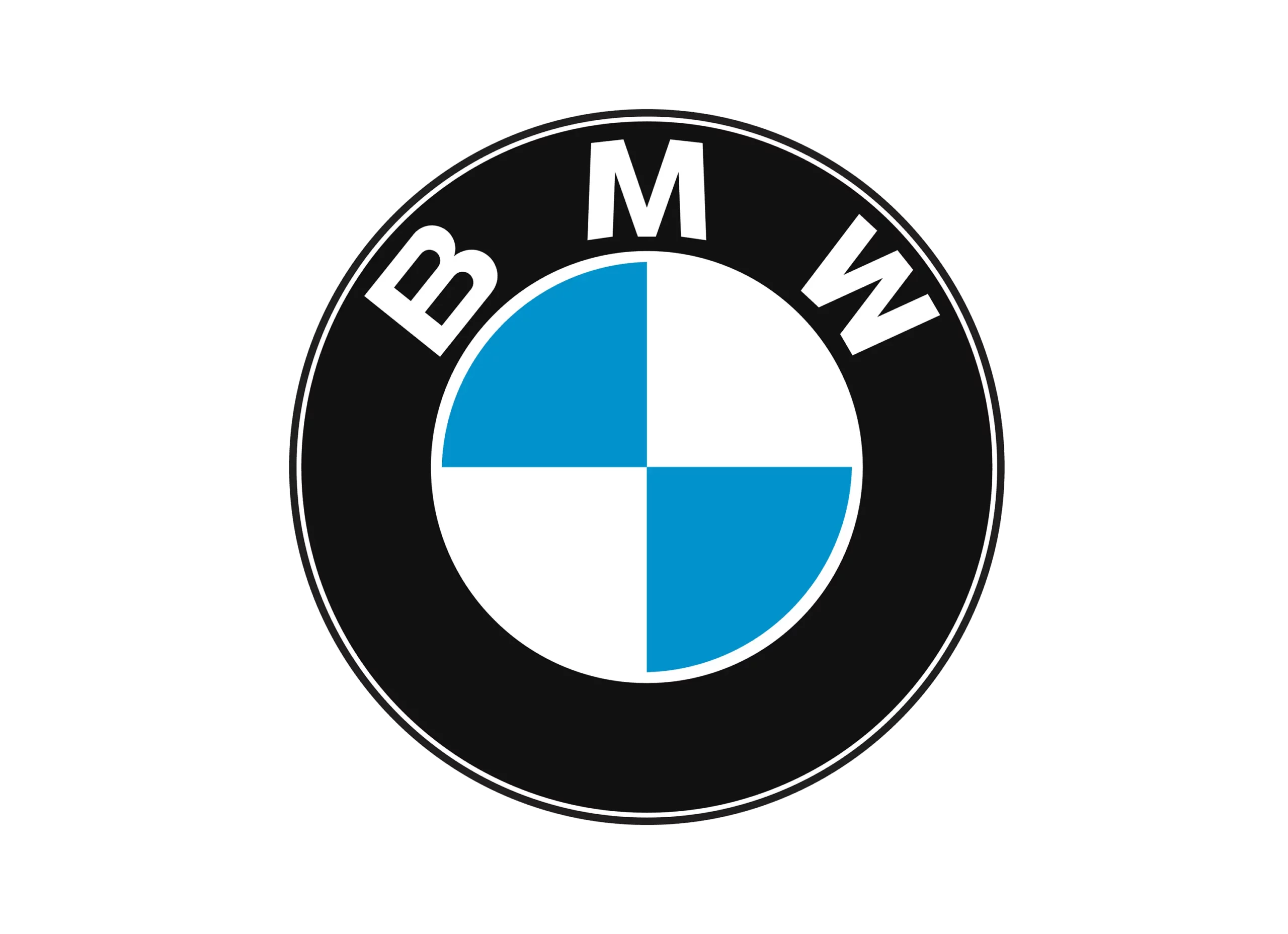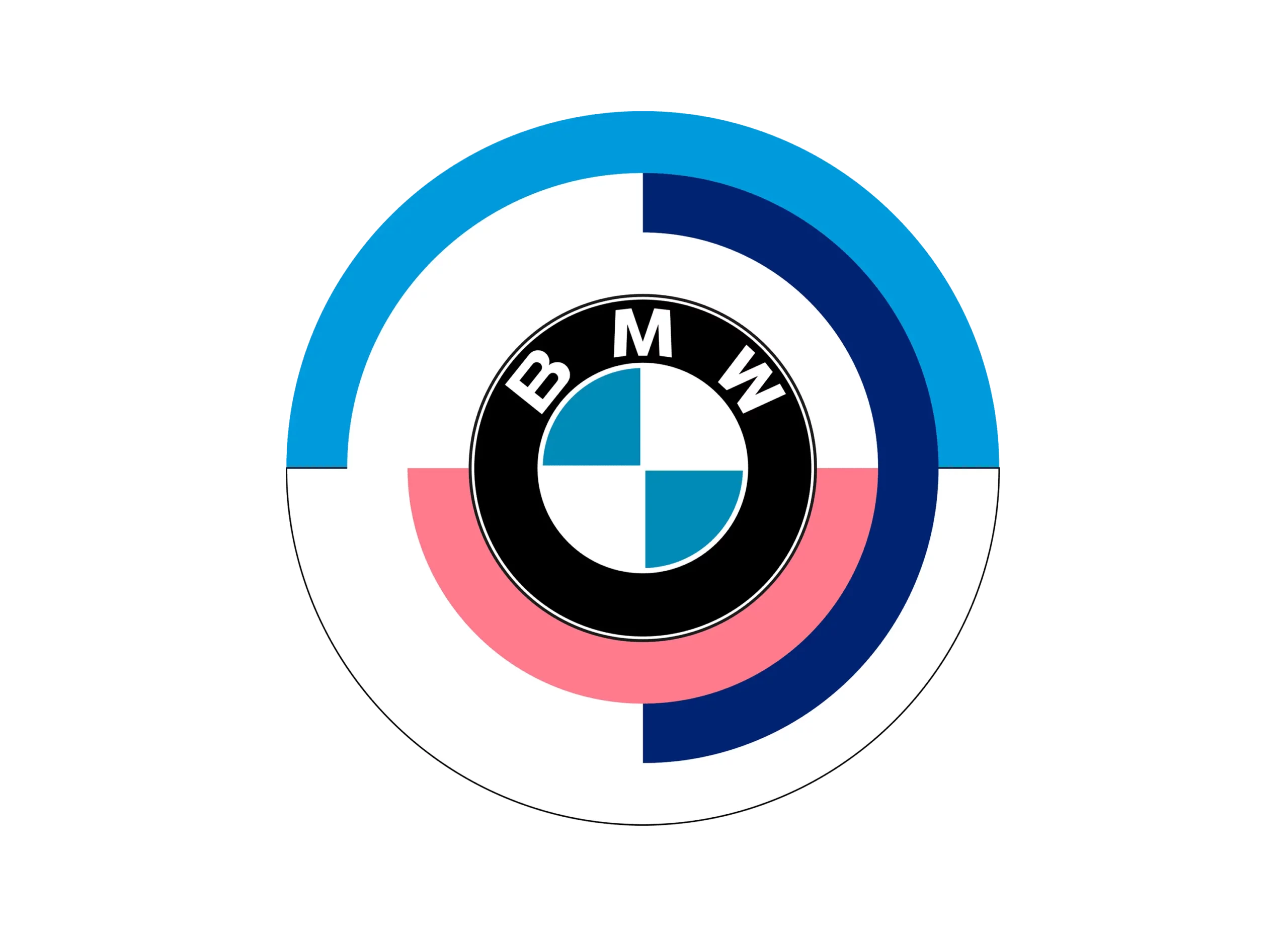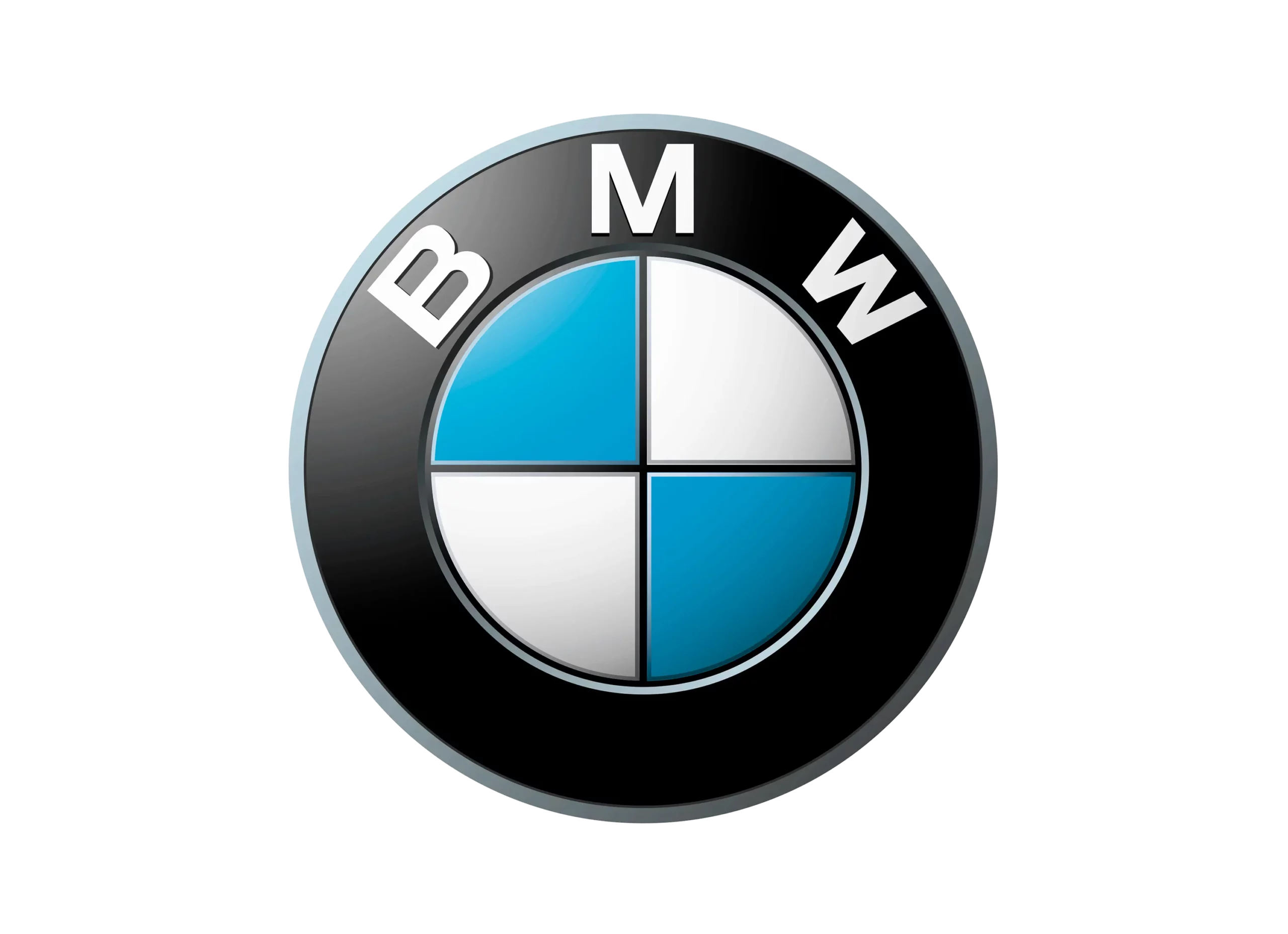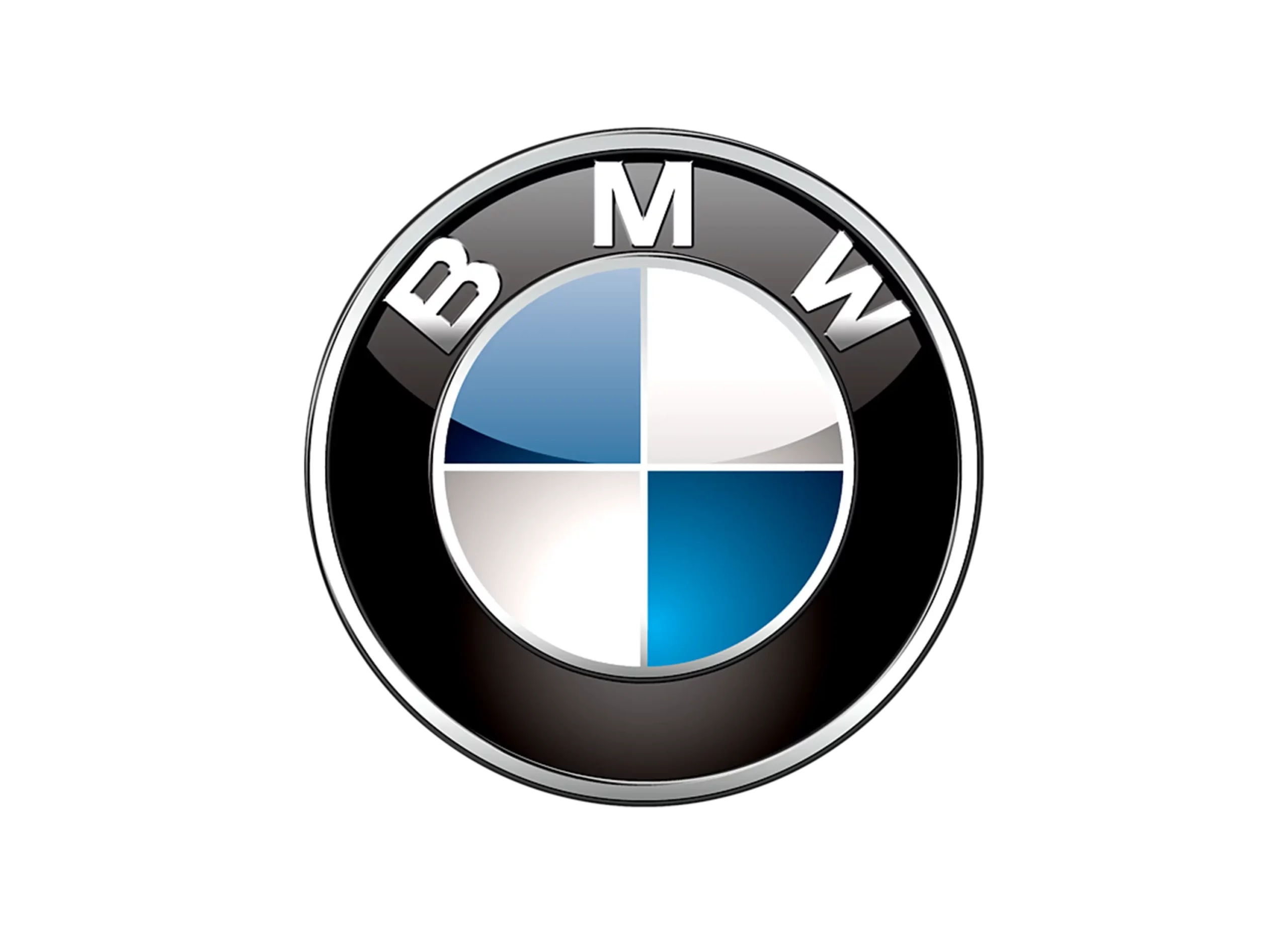BMW logo

The BMW logo is a well-known symbol that represents the German automaker. The logo consists of a circle divided into four quadrants, with the letters “BMW” positioned diagonally across the quadrants.
The circle itself represents a rotating propeller, a nod to BMW’s origins as an aircraft engine manufacturer. The blue and white colors of the logo are also significant, representing the colors of the Bavarian flag, as BMW is headquartered in Munich, Bavaria.
The letters “BMW” are written in a stylized font, with sharp, angular lines that give the logo a modern, dynamic feel. The font is also designed to be easily recognizable, making the logo instantly identifiable from a distance.
The overall design of the BMW logo is simple yet elegant, with a focus on symmetry and balance. The circular shape and diagonal lettering create a sense of movement and energy, while the blue and white colors give the logo a sense of tradition and heritage.
Overall, the BMW logo is a powerful symbol that represents the company’s commitment to engineering excellence, innovation, and style. It is instantly recognizable and has become an iconic part of the automotive landscape.
BMW Brand Overview
1916
Camillo Castiglioni, Franz Josef Popp, Karl Rapp
Munich, Germany
BMW is a well-known luxury car brand that has been producing high-quality vehicles for over a century. The company is based in Munich, Germany and is known for its sleek designs, innovative technology, and powerful engines. BMW offers a wide range of vehicles, including sedans, coupes, SUVs, and electric cars, with something to suit every taste and budget.
One of BMW’s hallmarks is its commitment to performance. The company’s vehicles are engineered to deliver a dynamic driving experience, with quick acceleration, precise handling, and responsive braking. BMW’s sports cars, such as the iconic M-series, are particularly renowned for their thrilling performance on the road and track.
BMW History
BMW is a German car manufacturer that has been producing high-quality vehicles for over a century. The company is known for its sleek designs, innovative technology, and powerful engines. In this blog post, we’ll take a look at the history of BMW and how the company has evolved over the years.
BMW, which stands for Bayerische Motoren Werke AG, was founded in March 1916. The company was initially called Rapp Motorenwerke GmbH and was located in Munich, Germany. The founders of the company were Franz Josef Popp, Camillo Castiglioni, and Karl Rapp.
In the early years, BMW produced aircraft engines for the German military during World War I. After the war ended, the company was forced to diversify its production, and it began producing motorcycles and eventually cars.
The first BMW car, the BMW 3/15, was produced in 1928. The car was a small, affordable car that was designed for everyday use. It was powered by a four-cylinder engine that produced 15 horsepower, hence its name.
In the 1930s, BMW expanded its range of vehicles, producing luxury cars like the BMW 328, which was designed for racing, as well as the BMW 327, which was a sporty two-door coupe. BMW also continued to produce motorcycles, which were popular with police and military organizations around the world.
During World War II, BMW returned to producing aircraft engines for the German military. After the war, the company was banned from producing aircraft engines, so it focused on producing motorcycles and cars.
In the 1950s and 1960s, BMW began to produce more powerful and luxurious cars. The BMW 507, which was introduced in 1956, was a two-seater convertible that was designed to compete with the Mercedes-Benz 300SL. It was powered by a V8 engine and had a top speed of 123 mph.
In the 1970s, BMW introduced the 3 Series, which would become one of the company’s most popular models. The 3 Series was a compact, sporty car that was designed to appeal to younger drivers. It was powered by a range of engines, including a four-cylinder engine, a six-cylinder engine, and a turbocharged engine.
BMW also continued to produce luxury cars, such as the 7 Series and the 6 Series, which were popular with executives and wealthy individuals.
In the 1980s and 1990s, BMW expanded its range of vehicles even further, introducing SUVs like the BMW X5 and sports cars like the BMW Z3 and Z4. BMW also continued to develop its technology, introducing features like all-wheel drive, anti-lock brakes, and traction control.
In recent years, BMW has focused on developing electric and hybrid vehicles. The BMW i3, which was introduced in 2013, is an all-electric vehicle that has a range of up to 153 miles on a single charge. The BMW i8, which was introduced in 2014, is a hybrid sports car that has a top speed of 155 mph.
In conclusion BMW is a German car manufacturer that has been producing high-quality vehicles for over a century. The company has evolved over the years, producing a range of vehicles that appeal to a wide range of customers. From its early days producing aircraft engines to its current focus on electric and hybrid vehicles, BMW has always been at the forefront of automotive technology and design. With its commitment to performance, luxury, and sustainability, BMW is sure to continue producing exciting and innovative vehicles for years to come.




